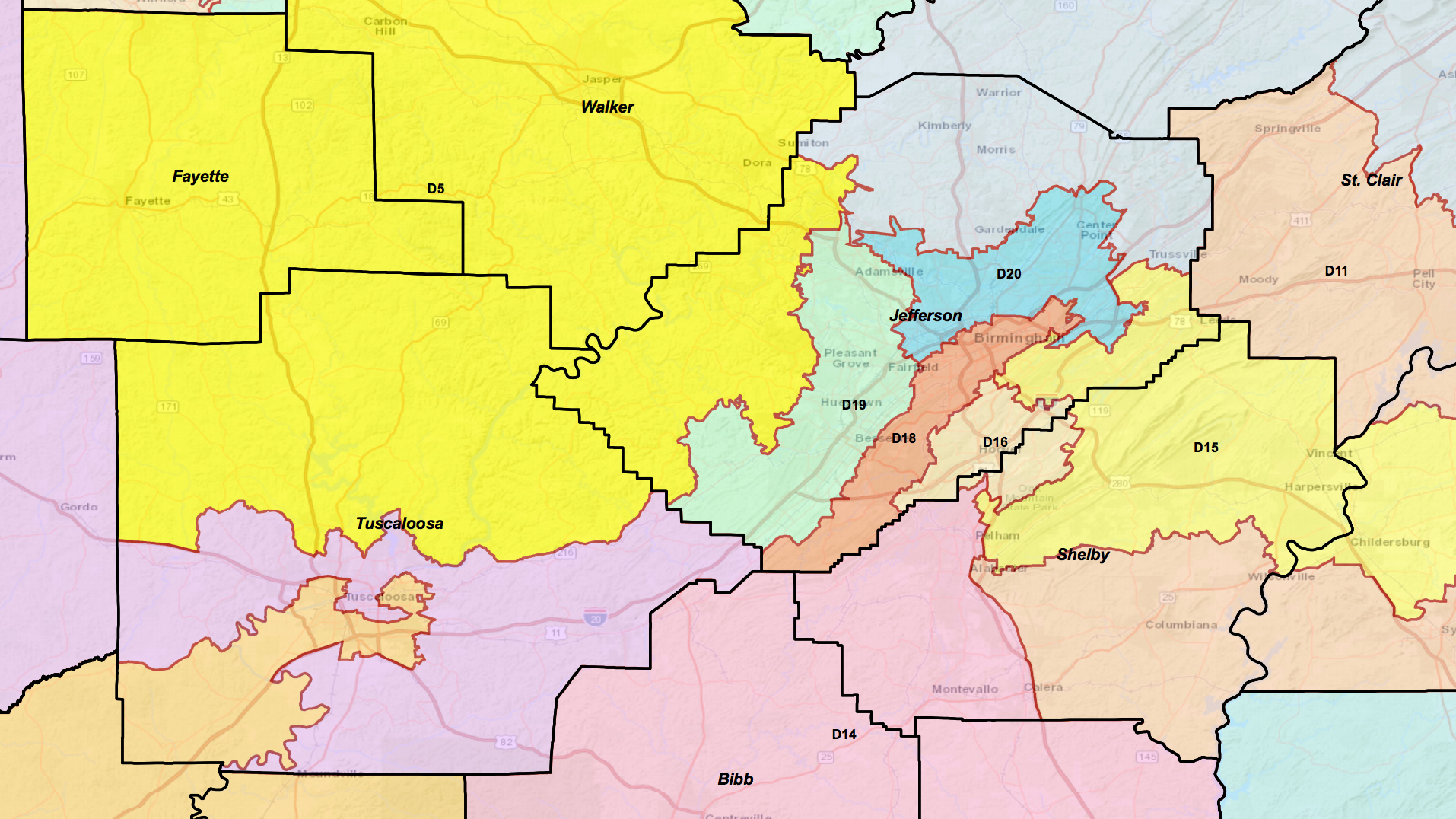The Alabama Permanent Committee on Reapportionment and Redistricting held a public hearing Wednesday on pending redistricting in Montgomery at the Alabama Statehouse.
Chairman Sen. Jim McClendon, R-Springville, said: “Every ten years the Census is completed to count the population of the nation.”
“We use this to redraw the state House of Representatives Districts, the state Senate districts, the state school board districts, and the Congressional Districts,” McClendon said.
“The ideal district size is 143,551 for the Senate,” McClendon said. “It does not need to be exactly idea, but within the range of plus or minus five percent. The ideal House district is 47,850 plus or minus five percent. Congressional districts have to have the same number of people. That is set by the courts and is out of our control.”
McClendon said that state Senate District 25 has gained 6,180 people, while Senate District 26 has gone down by 8,300. Senate District 30 has gone up by 1,400. House District 31 increased by about 1,700 people. House District 69 lost about 2,500 in population. House District 75 went up, while House District 76 went down 4,400. House District 78 decreased by about 7,800. House District 90 went down by 2,600.
“There is definitely a long-term migratory trend from the rural areas to the more urban areas,” McClendon said. “When that happens the committee has to get together and determine how to address it.”
Chairman state Rep. Chris Pringle, R-Mobile, said: “This meeting is on the subject of redistricting only and not any other issue before the legislature.”
Committee Attorney Dorman Walker said: “The legislature cannot just draw district anyway it wants. It is bound by state and federal law.”
“The congressional districts have to be more or less equal,” Walker said. “State House and Senate Districts have to be plus or minus five percent of the ideal population.”
Walker said that the ideal districts are determined by dividing the state population by 35 for the Senate and 105 for the Alabama House of Representatives.
“There will be some counties that will split and there will be some communities that are split,” Walker said. “The 2010 redistricting narrowed to plus or minus to just one percent. That resulted in more counties being split.”
“Any plan must be nondiscriminatory,” Walker said. “Redistricting is done as race neutral as possible except that in the end race may be considered in order to comply with Section 2 of the Voting Rights Act.”
A landmark voting rights case in the 1980s brought by then-state Rep. Joe Reed undid the 1980 redistricting plan. The court ordered the state to create 27 majority-minority House districts and seven majority-minority Senate districts. Any redistricting plan is going to have to not violate that court order.
“All districts should reflect the will of the people which is why these hearings are held,” Walker said.
Walker said that redistricting is based on what the population was on April 1, 2020. That number includes people who can’t vote: children under age 18, people who are merely visiting the state, non-citizens, as well as people who are incarcerated or have lost their voting rights.
“Contests between incumbents will be avoided wherever possible,” Walker said.
Carol Mosely with the League of Women Voters of Montgomery complained of “unfair districting” in 2010 that split Montgomery County into three congressional districts.
Mosely accused the 2010 redistricting plan of packing Democratic voters and called the line between the 2nd Congressional District and the 7th Congressional District “highly irregular.”
“The League of Women Voters Supports a redistricting and reapportionment that does not split any county in the state,” Mosely said.
Walker said that the League has submitted a congressional redistricting plan with two Black opportunity districts in it.
Cleon George Washington Jr. said in a prepared statement that the 2010 redistricting marginalized Black voters.
Tabitha Isner said that in the 2008 election Democrat Bobby Bright won by 2 percent and in 2010 Republican Martha Roby won by 1 percent. After the Legislature redistricted the state, “Congressional District two is not competitive.”
“That division is not necessary and serves no purpose other than racial gerrymandering,” Isner said.
“White voters are likely represented by a different representative than Black voters,” Isner said. “All three seats are regularly won by a margin of over 20 points whether that is by a Republican or by a Democrat.”
Isner claimed that this led to political extremism on both sides.
“When election are won in the primaries and a representative has no fear of losing in the general election they become more and more extreme in their beliefs and less and less likely to seek bipartisan compromise,” Isner said.
Isner was the Democratic nominee in CD2 in 2018 and was easily defeated by then-incumbent Congresswoman Martha Roby, R-Montgomery.
Catherine Kirkpatrick said that Alabama Senate District 26 is 78 percent Black, while state Senate District 25 is majority white and goes out into Crenshaw County. She is proposing redrawing those lines.
Rev. Rayford Mack is the president of the Montgomery Region NAACP
“I would like to urge the committee to create fair and representative district maps,” Mack said. “I was a candidate for House District 74 in 2018.”
Mack lost to state Rep. Charlotte Meadows, R-Montgomery.
“Black voters should be no longer be unfairly packed in Montgomery and Jefferson Counties,” Mack said. “Communities of interest should not be split in Huntsville.”
Pastor Kenneth Glasgow said that prison inmates should be counted in the district in which they are from rather than where they are incarcerated.
“There are twelve states are already doing this,” Glagow said.
“There is no reason why it can’t be done,” Walker said. “That proposal has not been submitted.”
Glasgow said that he would submit a plan to the committee.
“You can contact your Senate member or your house member and tell them what you think,” Walker told the audience.
McClendon said that we did not yet whether the public would be allowed in the Statehouse for the special session on redistricting due to COVID-19 protocols.
Wednesday’s meeting was open to the public.
State Sens. Bobby Singleton, D-Greensboro, and Steve Livingston, R-Scottsboro, were also in attendance at the public hearing.
State Rep. Mike Holmes, R-Wetumpka, was present but is not a member of the committee.
Alabama Republican Executive Committee Member former state Rep. Perry O. Hooper, R-Montgomery, objected to efforts to put all of the people in Montgomery County into one majority-minority congressional district.
“I am happy with the districts the way that they are,” Hooper said. “I trust that Chairmen Pringle and McClendon will resist any effort to gerrymander the state’s district lines.”
The Permanent Committee on Reapportionment is canvassing the state to get public opinion on redistricting. The committee will hold public hearings in Gadsden, Greenville, Brewton and Opelika today.




















































